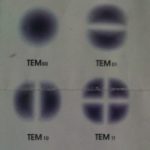- This topic has 8 replies, 7 voices, and was last updated 10 years, 1 month ago by
 Jamal.
Jamal.
-
AuthorPosts
-
-
March 14, 2015 at 6:11 pm #18673
 K. Esakki MuthuParticipant
K. Esakki MuthuParticipantWhat is the fundamental difference between dual drive MZM and Lithium Niobate MZM(LiNbO3-MZM). whether both are same, if it is so, why there is a specific LiNbO3 MZM ? please help me
-
March 14, 2015 at 11:50 pm #18674
Dr Rk Sethi
ParticipantThe Mach Zehnder modulator is the basic building block used in optical communication links for modulation.
It is an intensity modulator based on the interferometer principal.The MZ modulator are manufactured by using the different material, but presently most of the long distance high capacity optical communication systems utilize LiNbO for the same.
-
March 15, 2015 at 12:06 am #18675
Dr Rk Sethi
ParticipantLiNbO3 – Lithium Niobate is an electroptic material.
Presently, the Lithium niobate modulator is the best for the external modulation of optical signal at very high data rates.(20 -40 Gbps).
It requires Low driving voltage and having good compatibility with optical fibers -
March 15, 2015 at 5:06 am #18683
 K. Esakki MuthuParticipant
K. Esakki MuthuParticipantThank you, sir still I have some queries, I have gone through some papers, they have not even mentioned as LiNbO3 MZM simply mentioned as dual electrode MZM. that’s why I got confusion?
-
March 15, 2015 at 5:22 am #18684
Abdallah Ismail
ParticipantI think you may find MZM with single drive or two drives,In single drive both phase shift arms are connected to the same voltage and for two or dual drives,two phase shift arms are connected to different voltage source.
I think ,the dual electrode is two voltage drive.
Single voltage drive may be used only for phase shift but two dual drive may be for phase and amplitude modulation.
check the help of the component in “Transmitter lib./Modulators/Optical” -
March 15, 2015 at 2:19 pm #18703
 Heitor GalvaoParticipant
Heitor GalvaoParticipantThe Mach-Zehnder modulators, Mach-Zehnder modulator (MZM), are external modulators Mach-Zehnder interferometer-based, which uses the principle of constructive and destructive interference between the phases of the signals that propagate by each arm of the modulator.The MZM consists of two parallel waves guides and of same length, usually manufactured by an alloy of lithium Niobate (LiNO3), which exposes properties that cause the variation of the refractive index as a function of electric field applied. Each of the waveguides is inserted inside of a pair of electrodes which allow the application of an electric field on the same.The MZMs have an important phase modulation parameter that can be printed to the modulated signal. You can obtain a free modulation chirp, which is often desired. The two arms of the modulator are controlled by the same voltage amplitude, but with opposite signs. This way, the phase term becomes null. This condition is known as control balanced or push-pull operation. And due to the possibility of working with high rates of transmission, being independent of them, with the possibility of modulate the intensity and phase of the optical field independently, the MZMs are part of most advanced optical modulation formats displayed, i.e. its use is necessary to obtain these formats of desired modulations:
ACRZ: Alternative-chirp return-to-zero
AMI: Alternate mark inversion
AP: Alternate-phase
CAPS: Combined amplitude phase shift
C-NRZ: Chirped non-return-to-zero
CRZ: Chirped return-to-zero
CSRZ: Carrier-supressed return-to-zero
DB: Duobinary
DCs: Duobinary carrier suppressed
DST: Dispersion-supporterd transmission
M-ASK: Multilevel amplitude shift keying
Pass: Phase amplitude shift keying
PSBT: Phase-shaped binary transmission
SSB: Single side band
VSB Vestigial side band. -
March 16, 2015 at 4:12 pm #18774
 Ibn AzizParticipant
Ibn AzizParticipantDear Abdallah Ismail and Heitor Galvao, u explained really very well. Nice Job.
-
March 29, 2015 at 6:30 pm #19046
 gherbi mohamedParticipant
gherbi mohamedParticipanthi,
what about a LiNO3 MZM application for SSB transmission or SC (suppression carrier), i.e can you explain me the operating point in details (null, peak and quadrature) and their effect on the spectrum of the output of the modulator, and if i need a SSB or SC :what’s the parametres applied on the MZM to have SSB spectra or SC spectra?
best regards -
October 27, 2015 at 7:22 am #27126
 JamalParticipant
JamalParticipantPlease can anyone explain the operation of LiNO3 MZM operation at null point ?
How multiple sidebands are produced
If there is destructive interference and transmittance is near zero (looking at the transfer curve of MZM) then how come we get signal at the output ?
-
-
AuthorPosts
- You must be logged in to reply to this topic.

